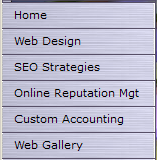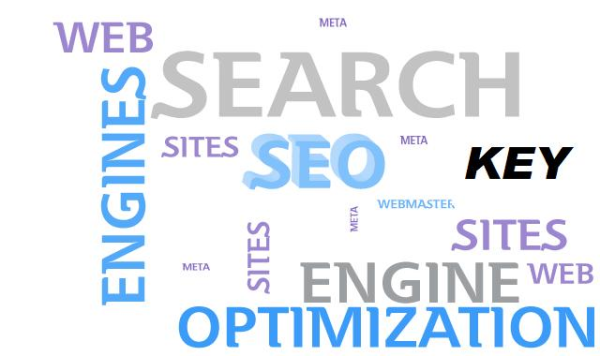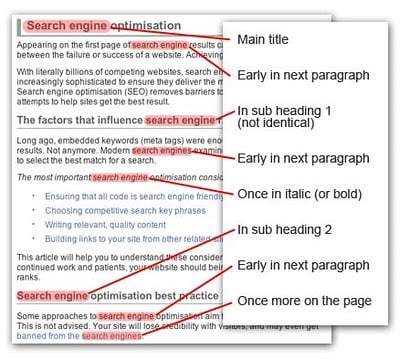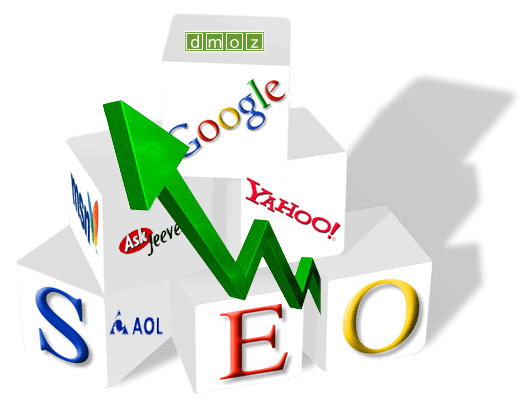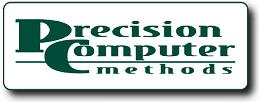We have now captured the attention of our viewer by telling them clearly the benefits of what we offer. They like what they see and they want more. How you present that "more" is very important to keeping your visitor around long enough to respond to your Call to Action (more on Call to Action in a later lesson). Think of a website navigation scheme as a pyramid where the information offered is more specific and succinct at the top of the pyramid and becomes broader and deeper as you delve further into the website. The information is more complete and offers a greater explanation of the topic pursued as you go further down the pyramid and deeper in the navigation. This allows the visitor to decide how much they want to pursue, rather than having to slog through too much or more information than they want too soon. Most newspaper articles and press releases are written like this.
____________________________________________________________
Tags: Inbound Marketing, Website Traffic, Website Navigation, Web Optimization
Your Website's First Impression - SEO SOS #5
Posted by Peter Heinicke on Sun, Jun 17, 2012 @ 11:15 PM
We have focused on keywords for positioning and for content in past lessons. Now we need to look at traffic generation soon. But first, let's consider what a visitor sees when they do arrive at your site. Does your site convey authority on its topic? Does it get to the point of what you do and what you offer right away? Is the navigation logical and easy to understand? Yes, we want traffic; but we want that traffic to stick around, too. Your web statistics will show where a viewer enters your website, where they exit and how long they stay. So you will be able to easily determine the success of how well-like your website it. We'll cover more on web stats in a later SEO SOS lesson. Two things are of paramount importance in your web design: 1) The first impression you make, and 2) The navigation style you use. Let's explore first impressions of a website in this lesson. We've all heard the expression, "You only get one chance to make a first impression." With the breadth and depth of the Internet, this statement couldn't be more important. Factors that impact how well your website is received include:
Tags: SEO, Web traffic, Website Traffic, SERP, SEO Authority, Web Optimization
Using Image Tags to Embed Keywords - SEO SOS #4
Posted by Peter Heinicke on Wed, Jun 13, 2012 @ 09:43 PM
Sometimes it is difficult to find ways to add keywords to your content without the copy sounding completely phoney. The goal is from 2% to 7% keyword density and while it is not always easy to find ways of using those keywords, there is a technique you may not be aware of using the keyword ALT tag. When you place an image in your HTML code, one of the parameters that can be added is called the ALT tag. This tag is simply a place in the image tag to put a description, name or title related to the image. It does not show unless you have a browser that show ALT tags when you hover over the image with the mouse. Another time you may see this text is when the image is loading. But the search engines do see this text description and will index it to help you gain keyword recognition for the website. This technique is more effective if you vary the ALT tag content so it is not just a repetition of the same keyword or keyword phrase over and over.
Tags: SEO | organic search | Paid Search, Website Traffic, Search Engine Optimatization, SEO Authority
After selecting a series of keywords that your potential customer will use to find your website, you need to focus on those keywords as part of your web page content. If you have several keywords, you may want to have a web page that focuses specifically on that keyword. For example, let's say your keywords are:
- meditation tool
- habit control
- focusing tool
- relaxation
- learn to meditate
- how to meditate
- meditation supplies
By focusing on each of these words with a page that corresponds to
the keyword phrase and hitting an appropriate keyword density ratio - somewhere between 3% and 7% is often considered a good range - you assist the search engines in finding your page for those keywords. However, if you exceed the keyword density by too much, the search engines will probably consider your site to be artificially stuffed and penalize your website. So you need to watch carefully how your keywords are dispersed. It is not just the keyword density that is important but also the placement and usage of those keywords. It is important that your keywords appear in the following locations:
- Page title
- Meta tags
- Very early in the website in a <H1> heading tag
- Within the first 10 to 20 words of the first paragraph
- Bolded within the body content
- Alt tags on your images
If you find your competitors' website consistently placing higher than your website on a search for your keywords, it is likely that your website is not utilizing these keyword positioning tactics. Remember that in Lesson #1, we emphasized that it is all about keywords. Keywords are the crumbs that lead your customers to your website. Those crumbs have to be well-placed on your web pages so that the search engines can create the trail to your website for your potential customers. The only reason the search engines will create that trail to your website is if your web design illustrates to the search engines that you are an authority for that keyword phrase. More about creating authority in Lesson #3.
Your assignment this week is to review your website for keyword placement to see if you can improve the way your content is displayed. Look for your keywords on each page and determine whether you are trying to place too many keywords on one page thereby diluting the keyword density. If that is the case, consider breaking your content into separate pages that will be more easily found by the search engines.
Tags: Inbound Marketing, SEO, Website Traffic, Web Optimization, Keywords
Tools for Do it Yourself Search Engine Optimization
Posted by Peter Heinicke on Sat, Jul 23, 2011 @ 02:56 PM
- how many clicks each day or within a date range.
- Which cities are they coming from.
- Which web pages did they look at and how long.
- Which sites referred them.
- What browsers did they use, what internet providers, what speed did they connect with.
- Custom goals you can set up yourself based on the other things. For example, did the visitor download a brochure?
We were able to use these tools (and a few others like UpCity) internally to enhance our position on some keywords for Precision Computer Methods Inc. from essentially nowhere to the top 2 on Google, top 1 on Bing and top 1 on Yahoo for the keyword "Sage Pro Consultant". If you would like us to do this work for you, or train you or your staff how to do the work, we would be happy to help. Just call 630 562 2384 or click on peter.heinicke@pcmethods.com and send us an email.
Tags: SEO | organic search | Paid Search, leads, Inbound Marketing, Website Traffic

